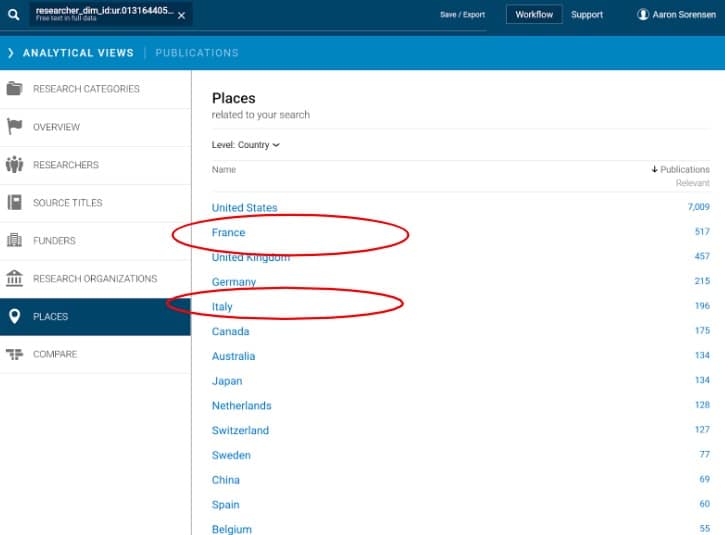Tracing Three Generations of Immunotherapy Through Dimensions Data (Part 2: On Which Giants’ Shoulders is June Standing?)
After characterizing the bibliometric impact of Carl June’s thought leadership in Part 1 of this series and exploring the funding landscape of June and his collaborators, a logical next step in the analysis is to study the generation of researchers who preceded them. In other words, what can be said about the body of work which has allowed June to “see further,” as Newton famously put it, by “standing on the shoulders of giants.”
With access to over 95 million publications, nearly 1 billion citations, and 4 billion connections of interlinked content to grants, publications, clinical trials, and patents – Dimensions allows us to quickly explore and measure research outputs. The next few figures are the analogs of the ones produced for June and his collaborators in Part 3, except this time we will be looking at the characteristics of the scientists whom June most often cites in his highest-impact work.

Although any given publication will cite many contemporaneous studies, there are inevitably frequent references to much older work considered to be the fundamental building blocks for the research field of interest. By generating the analogous figures as produced in part 1, but this time for the scientists on whose shoulders June and colleagues have stood, we are able to get a sense of how the field of cancer immunotherapy has evolved as the guard has changed from those who mentored June’s generation to the current torch bearers leading the field.
An analytical view of the publications most influential to June’s highly-cited work, show us that France and Italy replace Japan and Canada among the top-five countries. Although there are many possible explanations for this, the most likely one is that while many of the early breakthroughs came from France and Italy, the incentive structure was not in place for those fundamental discoveries to be translated into clinical advances of a more applied nature, thus allowing for investigators in Japan and Canada to fill in the translational void.

Dimensions allows you to seamlessly search across content types and easily filter by researcher in the grants database, comprised of 4 million grants and $1.3 trillion in funding. Taking a deeper look at the grants using the same generation of researchers, the analytical views tab displays the top funders related to the search.

Similar to the great-bang-for-the-buck funding we saw from National Institute of Diabetes and Digestive and Kidney Diseases within June’s ecosystem, there appears to be a similar phenomenon with the NIH’s National Heart Lung and Blood Institute (NHLBI) among those researchers most referenced by June in his highest-impact work. Here NHLBI has the fifth-highest dollar amount, but if we look at the resulting publications, we see in the next figure that they move up to third place in terms of publishing productivity.

In just a few minutes, Dimensions uncovered interesting, high-level funding insights on the next generation of June’s research. Stay tuned for part 3 of this series where we’ll explore a new generation of researchers in immunotherapy. Click here to visit our registration page and begin exploring our data today.
